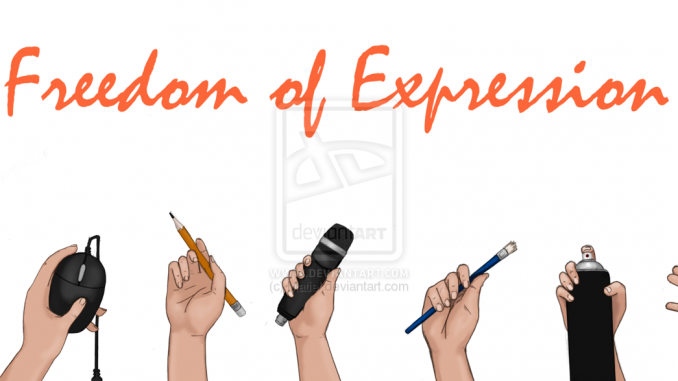
Article 19 of the Constitution of India grants all citizens of India the ‘freedom of speech and expression’, among many other related rights, aimed at promoting the virtues of democracy in a citizenry that was till recently subjugated to colonial rule. Although this provision in our constitution is aimed at providing the people of India an opportunity to discuss debate and deliberate on the issues pivotal to India’s progress, it is more often than not that this right has been used to malign, incite violence and spew hatred against vulnerable classes of Indian society. From episodes of comedy that have caused outrage (not necessarily because of the comedian’s sense of humour, but because of the public ‘reaction’) to outright hate-speeches targeting one religion or another, the question arises whether we should draw a line to this fundamental right that our constitution guarantees.
The recent episodes of public outrage against AIB’s Tanmay Bhat’s depiction of Sachin Tendulkar and Lata Mangeshkar are an example of the lack of there being a line to draw. A majority of Indians were clearly outraged at the ‘insensitive’ portrayal of such legends. Some even threatened to beat him up for his ‘senseless’ depiction of these two great Indians who also happen to be Bharat Ratna awardees. But, there were also quite a few who believed that it was the ‘reaction’ that has caused so much trouble and not the episode itself. And many more sympathised with the ‘comedian’. This article is not intended to be biased, so I will not take sides. The actual question here is not to decide if the depiction was actually an insult, but to analyse if there is a line to draw and there being one, where to draw it. The line applies not only to the person who uses his/her constitutional right to the freedom of speech and expression, but also to those who react to it and take offence to everything said and done.
Analysing two different examples might throw some light on this quagmire of problems. Singapore by definition is a constitutional republic. Much of its economic success has been attributed to the dynamic leadership of Late Lee Kuan Yew, the first Prime Minister of independent Singapore. But what goes unseen by an awe-struck tourist’s eye is the brutal suppression of the freedom of speech in this city-state. Beneath the squeaky clean roads of Singapore is an unseen example of how Mr. Lee channelled the freedom of speech (or the lack of it), which Singapore’s constitution guarantees Singaporeans, to noble economic pursuits. In an interview he gave, Mr. Lee, when asked about this lack of freedom of speech, supposedly told the journalist that Singaporeans wanted roads, schools, hospitals and jobs, over the freedom to write editorials in newspapers. Singapore’s success despite being a tiny city with no natural resources is attributed to the ruthlessness of an ‘elected’ leader. The second example is that of the United States. The first amendment to this constitution grants Americans the right to freedom of speech and protects the press. Americans take this right seriously. Anywhere from burning the American flag to Donald Trump calling all Mexicans rapists and drug-dealers, the First Amendment protects the rights of such Americans, even though it might seem to contradict the very purpose of that amendment.
India is somewhere in the middle of these two extremes. We are not governed but ruthless politicians, who want to suppress all forms of criticism towards the government, neither are we allowed burning of our national flag (desecration of the tricolour is an offence according to the Indian Flag Code), an identity of India’s sovereignty, in the name of freedom of speech and expression. Yet, we see people on both sides of the debate crossing the line. From insensitive comedians to intolerant reactionists, India is yet to figure out what the 19th Article of our constitution actually guarantees.
Coming back to the question about whether there is a line to draw, the answer points out that there certainly is. But the most important questions still remain- who should draw the line and where to draw it. Perhaps, there will be a discourse and we will figure out answers to these questions. Until then, it is important for us, as citizens of India to appreciate Article 19 of the Constitution and its role in building the largest functioning democracy on the face of earth. I am grateful that I exercised my right to freedom of speech and expression, to write this article.
Source: Youth Ki Awaaz

Leave a Reply